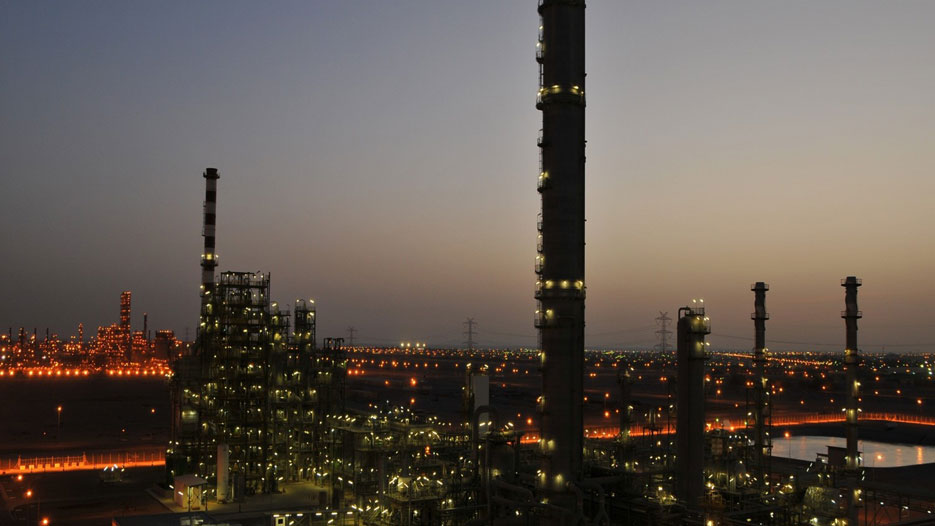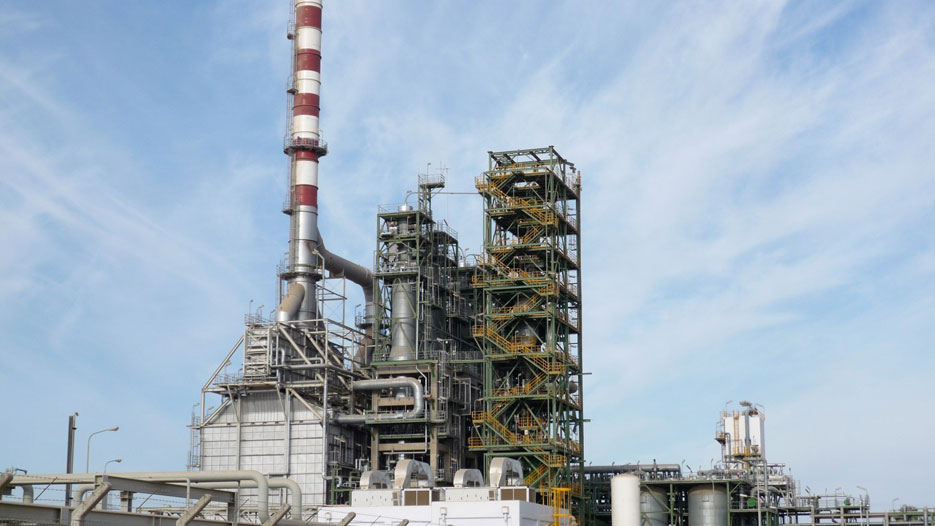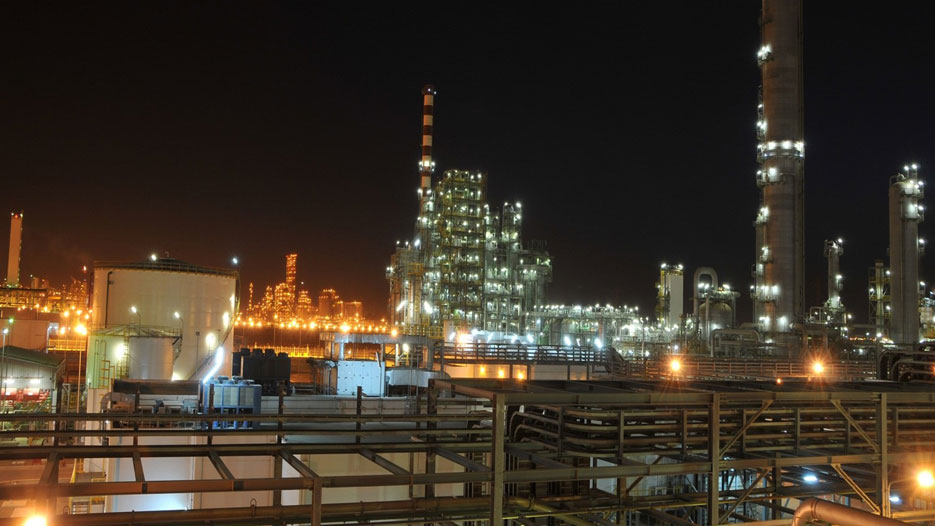Petrochemical industry in Saudi Arabia: looming challenges
Despite opening up to markets in the east and to investors globally, the future of the Saudi petrochemical industry remains challenging. About 90 million tons is the total annual output of Saudi Arabia’s petrochemical production.

By Gérard Al-Fil
The Kingdom of Saudi Arabia is often misjudged as a state that drills for oil and sells the precious commodity, but little is known about its thriving petrochemical business and booming companies like NATPET in Yanbu.
According to dmg events, organizer of the Middle East’s biggest industry fairs “The Big 5”. Regardless, the Saudi petrochemicals industry is one of the strongest sectors in the Kingdom. Twenty-five projects are currently underway worth U$15 billion. “An additional U$46 billion worth of projects are under the planning stage located in Saudi’s Western region where one-third of the country’s plastic and petrochemicals industries are located,” says the dmg study.
According to the Gulf Petrochemicals and Chemicals Association (GPCA), the Arabian Gulf region has emerged as a global hub for the production of chemicals and petrochemicals. Over the last few decades, the industry was growing at an average CAGR of 12 percent.
“The petrochemical industry is like any other industry. If the world economy is in good health, the petrochemical industry is in good health,” says Jamal J. Malaikah, president and chief operating officer (COO) of NATPET. “If there is growth, if there is demand, it will be business as usual in the petrochemical industry,” he adds.
The GCC Chemicals Industry is the second largest manufacturing sector in the GCC representing 2.9 percent of the GCC gross domestic product and produces a worth of U$97.3 billion.
The GCC Chemicals Industry is the second largest manufacturing sector in the GCC representing 2.9 percent of the GCC gross domestic product and produces a worth of U$97.3 billion. The political and economic union GCC stands for Gulf Co-operation Council. It comprises the six Gulf states Saudi Arabia, Kuwait, Bahrain, Qatar, United Arab Emirates and Oman which have been forming a union since 1981.
NATPET is a pearl among the firms in the petrochemical sector. NATPET (the acronym stands for National Petrochemical Industrial Company) produced polypropylene (PP) resin since the year 2009. The plant is located at the western Red Sea coast in Yanbu Industrial City. It has a name-plate production capacity of 400,000 metric tons per year.
The plant is enjoying the sustainable advantage of producing its own high quality main raw material, propylene, through an integrated propane dehydrogenation plant. Polypropylene is a thermoplastic polymer. It is used in all kinds of packaging material, auto industry, house appliances, construction materials, etc.
According to the firm’s website, NATPET PP plant is using the state-of-the-art LyondellBasell licensed Spheripol technology producing a market-defined range of distinguished quality of PP resins. Malaikah:
“We have a 400,000 ton plant for polypropylene. We use a state of the art technology called Spheripol by LyondellBasell, one of the best companies in the world. Quality is key to any business.”
The entire industry in KSA directly employs more than 138,700 people according to a report by Gulf Petrochemicals and Chemicals Association (GPCA), with every job indirectly creating 5-6 additional jobs in the economy.

In spite of the global rise of green products such as clothes out of cotton, shopping bags out of paper or eatable dishes in the fast food sector, the significance of the petrochemical sector has never been rivalled. Oil and petrochemical products are essential for nearly all industry sectors, from automotive to textile and from the ICT sector to the construction business. Even the medical, pharmaceutical and agricultural sector (the latter derives fertilizers from petrochemicals) rely heavily on oil derivatives.
This puts Saudi Arabia as the second biggest oil producer behind Russia into the comfortable position of supplying the world with plastics, fertilizers, cables and all kinds of packaging and plastic bags.
According to the German foreign trade agency AHK, the petrochemical industry in Saudi Arabia is set to reach an export volume of 100 million metric tons by 2016.
The Saudi Central Department of Statistics and Information (CDSI), numbers the total value of Saudi Arabia’s petrochemical exports with 66.64 billion SAR, approx. 14.206 billion € for 2012, growing at a 12-year CAGR of 15 percent.
The Saudi Central Department of Statistics and Information (CDSI), numbers the total value of Saudi Arabia’s petrochemical exports with 66.64 billion SAR, approx. 14.206 billion € for 2012, growing at a 12-year CAGR of 15 percent.
The sector is dominated by SABIC, an acronym for Saudi Basic Industries Corporation. The dominance and legacy of SABIC is awesome. Not only is SABIC the market bellwether of the Riyadh based Saudi Stock Exchange. SABIC is also the biggest producer of petrochemical products in relation to output, making the group an important employer of Saudi nationals.
The petrochemical sector also shows that lower oil prices are a two-edged sword for the kingdom.
The price of the “black gold” fell by 50 percent from June 2014 to February 2015, weighing on the competitive advantage for the petrochemical industry. However, cheaper oil prices also translate into lower cost of goods sold.
Price fluctuations affect the market, Malaikah confirms. “But the window of effect is limited, maybe 2 to 3 months. Businesses that are dependent on oil adjust to this change. But it is not a long term effect. If the price of oil drops, it does not mean the petrochemical industry will decline. The petrochemical industry will be affected, but within a short period of time, the prices of the end product adjust.”
Therefore, Saudi Arabia has pushed all buttons to diversify its hydrocarbon-based economy. “Diversification has always been on the table in Saudi Arabia,” says Malaikah. “To be frank, in spite of the government’s efforts for diversification, to date, oil still plays the major role in the economy. We have seen the private sector move into electricity generation, telecommunications and transport. We see a lot of effort, and the government is playing a big part in it. However, in my opinion, it’s going to be a long road. It will take a while.”

NATPET
NATPET says on its homepage “in a short period of its existence” it has received outstanding acclamation from its customers for its sustainable product quality and after sales support. And the president and COO wipes another stereotype about his country from the table. “Most people don’t know that big portion of oil and gas are being used up in electricity power generation, water desalination and automobiles.” Diversification is also on NATPET’s agenda.
“We want to diversify and build more downstream. We have already started with one project that is already on stream. We have another project coming up,” he adds.
NATPET’s polyproylene products, with the brand name Teldene®, are sold in more than 60 countries of the world across the globe.
All NATPET grades have been tested to comply with the required international regulatory standards, such as FDA, EU, REACH, RoHS, etc.
Trial runs of NATPET products have been conducted by major industry acclaimed machine builders at their respective sites, like Brückner, Starlinger, Reifenhäuser (Reicofil) and AMUT who had posted those on their list of successfully performing grades, and recommended those suitable for respective applications by the downstream converting industry.
NATPET is a regular participant in international exhibitions and events, such as K-Show, ArabPlast, ChinaPlas, PLASTEUROASIA, as well as different events of the GPCA.
“NATPET puts utmost emphasis on the safety and security of humans and the environment they live in, and accordingly participates in regional and international initiatives to alleviate the society on these matters,” says the company which has been recognized through a host of regional and international awards and certifications offered for its endeavors towards the above.

Future Outlook
Back in June, NATPET was one of 3,200 exhibitors at the Chinaplas-2015 the 29th International Exhibition on Plastics and Rubber Industries was held in Guangzhou. The event was visited by 128,264 professionals from the petrochemical industry.
By reaching out to China, NATPET jumped on the Sino-Arabic bandwagon for more business along the New Silk Road. Back in 2012, SABIC’s Chinese ambitions became real when it launched in the port city of Tianjin, east of Beijing, a joint venture with China’s leading petrochemical firms such as Sinopec. The Sinopec SABIC Petrochemical Company laid then the foundation for a polycarbonate production complex with 260,000 metric tons per annum capacity. Competition is fierce and Saudi Arabia’s rivals do not sleep. America’s ExxonMobil Chemical Company runs a petrochemical and chemical joint venture with Sinopoec, too, in Fujian province. ExxonMobil Chemical also built up a technology center in Shanghai to lure and train local talents.
Meanwhile, KSA, as executives call the Kingdom (the abbreviation stands for Kingdom of Saudi Arabia) has paved way for more cash flow from abroad.
Since June 15 2015, institutional foreign investors the Saudi Stock Exchange is open for foreign institutional investors.
Petrochemicals, lenders and property-related firms make up to 75 percent of Tasi, thus fund managers have to focus on these sectors when investing in KSA. But only institutional investors with minimum assets amounting U$5 billion and with 5 five years investment experience are eligible to trade on the Tadawul market.
Despite opening up to markets in the east and to investors globally, the future of the Saudi petrochemical industry remains challenging. About 90 million tons is the total annual output of Saudi Arabia’s petrochemical production.
Despite opening up to markets in the east and to investors globally, the future of the Saudi petrochemical industry remains challenging. About 90 million tons is the total annual output of Saudi Arabia’s petrochemical production. “That’s a significant amount. The consumption in Saudi Arabia is 2.5 million tons,” Malaikah pointed out.
“The local market for downstream is limited. Today there is about 2.8 million tons of downstream consumption in Saudi Arabia. The production of petrochemicals is 55 million tons of end products excluding captive use. This is before Sadara or Petro Rabigh come on stream. Even if Saudi Arabia grows its downstream consumption by 10% it is not enough. It will take generations for the country to consume the production of the petrochemical industry. The government is encouraging everyone to invest downstream, but a big volume of our product has to be exported. These challenges will not disappear. NATPET is doing 2 downstream projects but there is a limit to how many projects we can do. If you have 400,000 tons, to transform it all to petrochemicals downstream, it is very difficult,” he says.
“In Polypropylene, the global demand stands at around 60 million tons. The supply is a bit higher but that depends on the operating condition of the plants. The supply will grow significantly with the shale gas products, Chinese products, Brazilian products, GCC products etc. There are a lot of threats, including shale gas, protectionism, increased duties, new technologies and our distance from the markets,” he adds.
Can Saudi Arabian petrochemical industry be competitive?
“We believe this is another challenge we will face very soon. By our very solid information, we will see about 13 million tons of petrochemical products based on shale gas in the US by 2017. Where will these products go? They will go to our markets. There will be competition in petrochemical products worldwide. We also see a global trend towards more protectionism since the financial crisis of 2008. There are higher tariffs, unfair anti-dumping laws etc. These are new challenges. These two factors are alarming and threatening. A third threat is the new technology that allows petrochemicals to be produced from coal. The Chinese are making big progress in that area. We are cautioning everyone now to look into these problems. The Chinese are not only building conventional petrochemical plants, they are building coal-to-gas plants. They have abundant coal resources,” he concludes.
Despite the future challenges in the immediate term, demand is strong. “Economies have improved. The economies are different from what they were in 2009 or 2010.” How NATPET aims to remain on the expansion track amid fierce competition is the job of crystal ball readers. “Our marketing strategy is our secret,” but things will be tough no doubt says Malaikah.